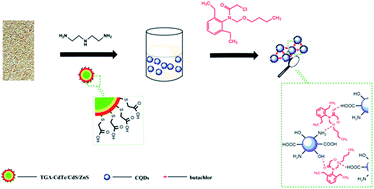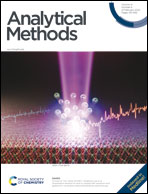Highly sensitive and selective detection of butachlor based on the resonance light scattering of doped carbon quantum dots
Abstract
In this work, a new method of resonance light scattering was developed for the sensitive and selective detection of butachlor. Firstly, buckwheat was used as the main carbon source to prepare a new type of doped carbon quantum dot using the hydrothermal method. A new method for the determination of butachlor was then established by the change in resonance light scattering intensity after the addition of butachlor into the doped carbon quantum dot solution. The detection effect was successfully optimized by investigating the optimum reaction conditions. Under the optimum conditions, the resonance light scattering intensity of doped carbon quantum dots was greatly enhanced at 460 nm after the addition of butachlor, and the intensity changes were linearly correlated with the butachlor concentration in the range of 1–7 μg L−1. The detection limit was 0.136 μg L−1, and the recoveries ranged between 98.6% and 101.8%. This method was also used for butachlor detection in environmental water.



 Please wait while we load your content...
Please wait while we load your content...